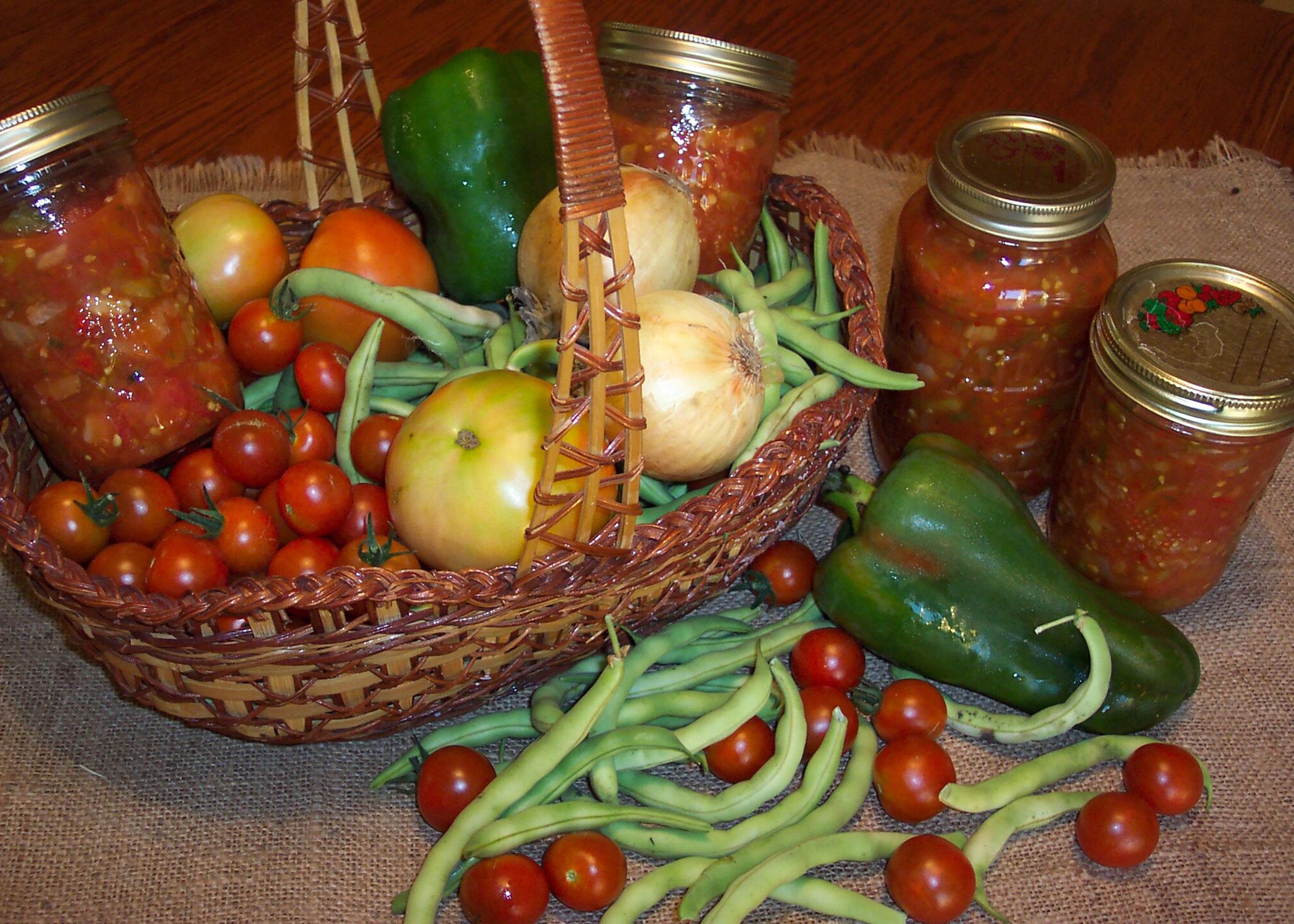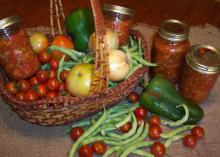Information Possibly Outdated
The information presented on this page was originally released on May 10, 2022. It may not be outdated, but please search our site for more current information. If you plan to quote or reference this information in a publication, please check with the Extension specialist or author before proceeding.
Check canning equipment before harvest begins
RAYMOND, Miss. -- Gardeners who want to preserve their abundant harvests by canning should make their list and check it twice -- now, before it’s time to begin canning.
Home canners should be sure they have the right recipes and equipment for the foods they intend to preserve. They should also make sure they inspect all their equipment.
“The canning process is a lot easier when you have the right equipment, plenty of supplies and research-based recipes,” said Janet Jolley, agent with the Mississippi State University Extension Service in Marshall County. “Canning season will go a lot smoother.”
First, check for all needed equipment:
- boiling-water canner
- pressure canner
- canning thermometer
- approved, threaded, home-canning jars with two-piece lids
- canning lids and rings
- canning utensils
- jar lifter for removing hot jars from a canner
- big-mouth funnel to help pack foods into jars
- headspace gauge to ensure the proper distance between the surface of food and underside of the jar lid
- clean cloth or paper towels to wipe the rims of jars before putting lids on
- narrow spatula for removing air bubbles from jars
- magnetic lid wand to help remove metal lids from hot water
Second, inspect all equipment to ensure it is safe to use and that canned items will reach the pressure and temperature to properly seal and kill harmful bacteria that could cause food spoilage or foodborne illness.
Take these steps to check or replace equipment:
- Inspect the canner:
- Check the gasket for cracks. Replace if cracks are present.
- Ensure that petcocks, vents and safety valves are not clogged.
- Have dial gauge canners tested to make sure they are accurate. Check with the local Extension office for testing availability.
- Check jars on hand for cracks, and note the sizes available to ensure there are enough.
- Buy new lids. Never reuse canning lids.
- Check ring bands for dents and rust. Replace if either or both are present.
- Check the jar lifter, bubble freer and headspace gauge to ensure they are in proper working order.
- Ensure there are enough pots and pans for blanching.
- Check other needed equipment, including knives, vegetable peelers and long-handled spoons.
Jolley points out that some equipment is an absolute necessity to preserve foods properly. Home canners cannot do without a boiling-water canner, a pressure canner, a jar lifter, jars, lids and rings, and a clean cloth or paper towels.
However, some equipment may not be necessary but does make the process easier. Nonessential items include a canning funnel, a bubble freer and a magnetic lid wand. A plastic knife can be used to release bubbles. Do not use a metal knife. It could damage the jars.
Fran Brock, Extension agent in Oktibbeha County, stressed the importance of using the correct type of canner with the right technique and research-backed recipe.
Boiling-water canners are used to process jams, jellies, preserves and high-acid foods, such as tomatoes and some fruits. A pressure canner is used when processing low-acid foods such as vegetables, meats and seafood.
“To store canned food at room temperature safely, foods must be sealed in an airtight container and must receive sufficient heat processing to kill all microorganisms that can cause spoilage and Botulism poisoning,” said Brock. “You need to use the right equipment, technique and recipe together to achieve this.
“You should always use research-based home canning recipes. These recipes have been tested in a laboratory to give the correct measurements of all ingredients, jar size, measurements of pH, time, temperature and pressure. These factors combined help kill bacteria,” Brock said.
Processing foods for the correct amount of time and at the right temperature also inactivates enzymes in the food that negatively change color, texture, flavor and nutritional value, Brock said.
Extension recommends that people follow the instructions provided by the National Center for Home Food Preservation for preserving any food items at home to reduce microorganisms that can cause foodborne illnesses. Housed at the University of Georgia, the center uses the research-backed data supported by and gathered from USDA testing.
While electric pressure cookers, also called multicookers, are great for getting meals on the table quickly, Extension does not recommend their use in home canning. Even cookers that come with recipes and a canning and preserving function on their digital controls are not recommended.
“Food spoilage and foodborne illness are two of the dangers of using a multicooker for canning foods,” Jolley said. “The National Center for Home Food Preservation makes clear that their tested canning processes are not recommended for use in electric pressure multicookers at this time. The center developed their recipes for stovetop pressure canners, which hold four or more quart-size jars standing upright.”
Brock said other unsafe canning methods cooks should never use include the open kettle canning method, the oven canning method and dishwasher processing.
“None of these methods provide sufficient heat to kill harmful bacteria,” she said.
Extension Publication 1152, “The Complete Guide to Home Canning,” provides more detailed information about equipment, supplies and preservation techniques.
For more information about canning processes and preserving food and research-based recipes, visit the National Center for Home Food Preservation web site at http://nchfp.uga.edu/.









